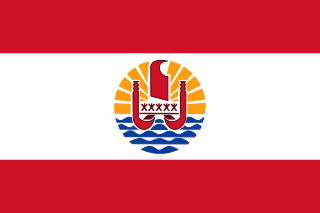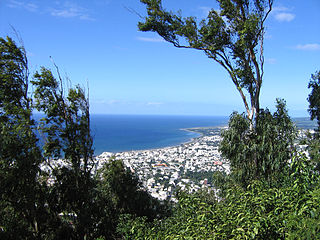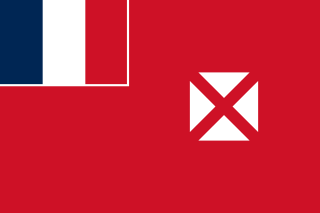 W
WThe Åland Islands occupy a position of great strategic importance, commanding as they do both one of the entrances to the port of Stockholm and the approaches to the Gulf of Bothnia, in addition to being situated proximate to the Gulf of Finland.
 W
WAscension Island is an isolated volcanic island, 7°56′ south of the Equator in the South Atlantic Ocean. It is about 1,000 miles (1,600 km) from the coast of Africa and 1,400 miles (2,300 km) from the coast of Brazil. It is governed as part of the British Overseas Territory of Saint Helena, Ascension and Tristan da Cunha, of which the main island, Saint Helena, is around 800 miles (1,300 km) to the southeast. The territory also includes the sparsely populated Tristan da Cunha archipelago, 2,300 miles (3,700 km) to the south, about halfway to the Antarctic Circle.
 W
WThe Canary Islands, also known informally as the Canaries, are a Spanish archipelago and the southernmost autonomous community of Spain located in the Atlantic Ocean, in a region known as Macaronesia, 100 kilometres west of Morocco at the closest point.
 W
WCeuta is a Spanish autonomous city on the north coast of Africa.
 W
WThe Channel Islands are an archipelago in the English Channel, off the French coast of Normandy. They include two Crown dependencies: the Bailiwick of Jersey, which is the largest of the islands; and the Bailiwick of Guernsey, consisting of Guernsey, Alderney, Sark, Herm and some smaller islands. They are considered the remnants of the Duchy of Normandy and, although they are not part of the United Kingdom, the UK is responsible for the defence and international relations of the islands. The Crown dependencies are not members of the Commonwealth of Nations nor of the European Union. They have a total population of about 170,499, and the bailiwicks' capitals, Saint Helier and Saint Peter Port, have populations of 33,500 and 18,207, respectively.
 W
WThe Territory of Cocos (Keeling) Islands is an Australian external territory in the Indian Ocean, comprising a small archipelago approximately midway between Australia and Sri Lanka. It is part of Southeast Asia and is in the Southern Hemisphere. The territory's dual name reflects that the islands have historically been known as either the Cocos Islands or the Keeling Islands.
 W
WSanto Domingo, officially the Captaincy General of Santo Domingo was the first colony established in the New World under Spain in 1492. The island was named "La Española" (Hispaniola) by Christopher Columbus. In 1511, the courts of the colony were placed under the jurisdiction of the Real Audiencia of Santo Domingo.
 W
WFrench Polynesia, is an overseas collectivity of the French Republic and its sole overseas country. It is composed of 118 geographically dispersed islands and atolls stretching over an expanse of more than 2,000 kilometres (1,200 mi) in the South Pacific Ocean. Its total land area is 4,167 square kilometres (1,609 sq mi).
 W
WThe history of Guernsey stretches back to evidence of prehistoric habitation and settlement and encompasses the development of its modern society.
 W
WThe history of Gwynedd in the High Middle Ages is a period in the History of Wales spanning the 11th through the 13th centuries. Gwynedd, located in the north of Wales, eventually became the most dominant of Welsh principalities during this period. Distinctive achievements in Gwynedd include further development of Medieval Welsh literature, particularly poets known as the Beirdd y Tywysogion associated with the court of Gwynedd; the reformation of bardic schools; and the continued development of Cyfraith Hywel. All three of these further contributed to the development of a Welsh national identity in the face of Anglo-Norman encroachment of Wales.
 W
WHistoire de Belgique is a seven-volume survey of the Belgian history by the historian Henri Pirenne (1862–1935) written in French and published between 1900 and 1932. The series, which traces the emergence of the Belgian nation-state from the Roman era until the start of World War I, is a classic of nationalist historiography and one of Pirenne's major works. Although Pirenne is today best known as a historian of Medieval Europe, the Histoire de Belgique series was his most respected work during his lifetime and the foundation of his reputation as Belgium's leading public historian.
 W
WJersey is the largest of the Channel Islands, an island group part of the British Isles. The islands are the last remnants of the medieval Duchy of Normandy that held sway in both France and England. The island remained loyal to the English crown after the return of Normandy to France in 1204 and has enjoyed self-government since.
 W
WJewish history is the history of the Jews, and their nation, religion and culture, as it developed and interacted with other peoples, religions and cultures. Although Judaism as a religion first appears in Greek records during the Hellenistic period and the earliest mention of Israel is inscribed on the Merneptah Stele dated 1213–1203 BCE, religious literature tells the story of Israelites going back at least as far as c. 1500 BCE. The Jewish diaspora began with the Assyrian captivity and continued on a much larger scale with the Babylonian captivity. Jews were also widespread throughout the Roman Empire, and this carried on to a lesser extent in the period of Byzantine rule in the central and eastern Mediterranean. In 638 CE the Byzantine Empire lost control of the Levant. The Arab Islamic Empire under Caliph Omar conquered Jerusalem and the lands of Mesopotamia, Syria and Egypt. The Golden Age of Jewish culture in Spain coincided with the Middle Ages in Europe, a period of Muslim rule throughout much of the Iberian Peninsula. During that time, Jews were generally accepted in society and Jewish religious, cultural, and economic life blossomed. Between the 11th and 15th centuries, Ashkenazi Jews experienced extreme persecution in Central Europe, which prompted their massive emigration to Poland.
 W
WLuzones was a demonym used by Portuguese sailors in Malaysia during the early 1500s, referring to the Kapampangan and Tagalog people who lived in Manila Bay, which was then called Lusong.
 W
WThe history of the Maldives is intertwined with the history of the broader Indian subcontinent and the surrounding regions, comprising the areas of South Asia and Indian Ocean; and the modern nation consisting of 26 natural atolls, comprising 1194 islands. Historically, the Maldives had a strategic importance because of its location on the major marine routes of the Indian Ocean. The Maldives' nearest neighbours are Sri Lanka and India, both of which have had cultural and economic ties with Maldives for centuries. The Maldives provided the main source of cowrie shells, then used as a currency throughout Asia and parts of the East African coast. Most probably Maldives were influenced by Kalingas of ancient India who were earliest sea traders to Sri Lanka and Maldives from India and were responsible for the spread of Buddhism. Hence ancient Hindu culture has an indelible impact on Maldives' local culture.
 W
WMayotte is an overseas department and region of France officially named the Department of Mayotte. It consists of a main island, Grande-Terre, a smaller island, Petite-Terre, and several islets around these two. Mayotte is part of the Comoros archipelago, located in the northern Mozambique Channel in the Indian Ocean off the coast of Southeast Africa, between northwestern Madagascar and northeastern Mozambique. The department status of Mayotte is recent and the region remains, by a significant margin, the poorest in France. Mayotte is nevertheless much more prosperous than the other countries of the Mozambique Channel, making it a major destination for illegal immigration.
 W
WMelilla is a Spanish autonomous city located on the northwest coast of Africa, sharing a border with Morocco. It has an area of 12.3 km2 (4.7 sq mi). Melilla, an exclave, is one of two permanently inhabited Spanish cities in mainland Africa, the other being Ceuta. It was part of the Province of Málaga until 14 March 1995, when the city's Statute of Autonomy was passed.
 W
WNew Caledonia is a special collectivity of France in the southwest Pacific Ocean, south of Vanuatu, about 1,210 km (750 mi) east of Australia and 17,000 km (11,000 mi) from Metropolitan France. The archipelago, part of the Melanesia subregion, includes the main island of Grande Terre, the Loyalty Islands, the Chesterfield Islands, the Belep archipelago, the Isle of Pines, and a few remote islets. The Chesterfield Islands are in the Coral Sea. French people, especially locals, call Grande Terre Le Caillou.
 W
WThe history of Norfolk Island dates back to the fourteenth or fifteenth century when it was settled by Polynesian seafarers.
 W
WThe types of sovereign state leaders in the Philippine archipelago have varied throughout the country's history, from heads of ancient chiefdoms, kingdoms and sultanates in the pre-colonial period, to the leaders of Spanish, American, and Japanese colonial governments, until the directly-elected President of the modern sovereign state of the Philippines.
 W
WRéunion is an overseas department and region of the French Republic and an Indian Ocean island in East Africa, east of Madagascar and 175 km (109 mi) southwest of Mauritius. As of January 2020, it had a population of 859,959.
 W
WTokelau is a dependent territory of New Zealand in the southern Pacific Ocean. It consists of three tropical coral atolls, with a combined land area of 10 km2 (4 sq mi). The capital rotates yearly among the three atolls. In addition, Swains Island, which forms part of the same archipelago, is subject to an ongoing territorial dispute and is currently administered by the United States as part of American Samoa. Tokelau lies north of the Samoan Islands, east of Tuvalu, south of the Phoenix Islands, southwest of the more distant Line Islands, and northwest of the Cook Islands.
 W
WThe Oguz Yabgu State was a Turkic state, founded by Oghuz Turks in 766, located geographically in an area between the coasts of the Caspian and Aral Seas. Oguz tribes occupied a vast territory in Kazakhstan along the Irgiz, Yaik, Emba, and Uil rivers, the Aral Sea area, the Syr Darya valley, the foothills of the Karatau Mountains in Tien-Shan, and the Chui River valley. The Oguz political association developed in the 9th and 10th centuries in the basin of the middle and lower course of the Syr Darya and adjoining the modern western Kazakhstan steppes.
 W
WThe formation of the United Kingdom of Great Britain and Northern Ireland has involved personal and political union across Great Britain and the wider British Isles. The United Kingdom is the most recent of a number of sovereign states that have been established in Great Britain at different periods in history, in different combinations and under a variety of polities. Norman Davies has counted sixteen different states over the past 2,000 years.
 W
WWallis and Futuna, officially the Territory of the Wallis and Futuna Islands, is a French island collectivity in the South Pacific between Tuvalu to the northwest, Fiji to the southwest, Tonga to the southeast, Samoa to the east, and Tokelau to the northeast.